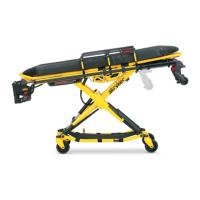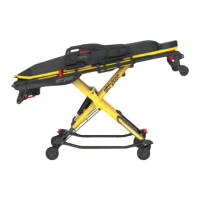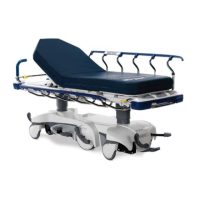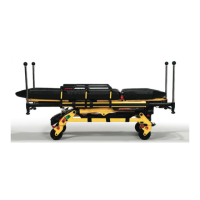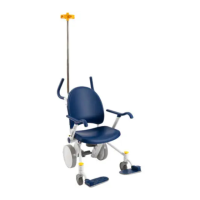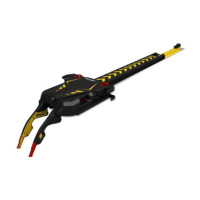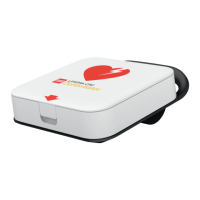IInnssttaalllliinngg tthhee vveehhiiccllee ssaaffeettyy hhooookk
Before installing the vehicle safety hook, the certified mechanic should plan for the placement of the vehicle safety hook in
the rear of the vehicle patient compartment.
WWAARRNNIINNGG
• Failure to install the vehicle safety hook may cause injury to the patient or operator.
• Always have a certified mechanic, familiar with ambulance vehicle construction, install the safety hook.
• Always make sure that the cot safety bar connects with the vehicle safety hook before you remove the cot from the
vehicle patient compartment.
HHaarrddwwaarree rreeqquuiirreedd ((nnoott ssuupppplliieedd))::
• (2) Grade 5, minimum 1/4”-20 socket head cap screws * for the short vehicle safety hook or long vehicle safety hook
• (2) Grade 5, minimum 1/4”-20 flat socket head cap screws * for the J vehicle safety hook
• (2) Flat washers
• (2) Lock washers
• (2) 1/4”-20 nuts
NNoottee -- The length of the socket head cap screws depend on the thickness of the vehicle floor. Use screws that are long
enough to go completely through the vehicle patient compartment floor, washer, and nut, with at least two full threads in the
nut.
1. Determine the correct vehicle safety hook front to back and side to side positioning, so the cot safety bar connects to the
vehicle safety hook every time.
• Positioning of the vehicle safety hook, front to back
• Positioning of the vehicle safety hook, side to side
2. Drill the holes for the screws.
3. Fasten the vehicle safety hook to the vehicle patient compartment floor.
4. Make sure that the cot safety bar connects with the vehicle safety hook before you remove the cot from the vehicle
patient compartment.
6086-209-001 Rev F.2 17 EN

